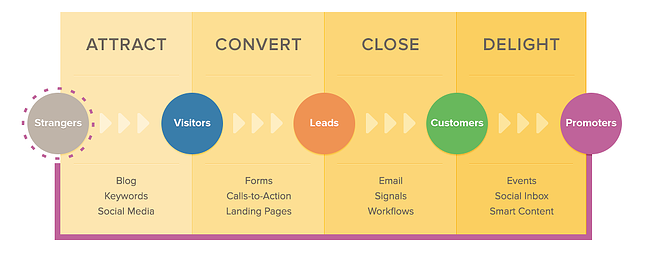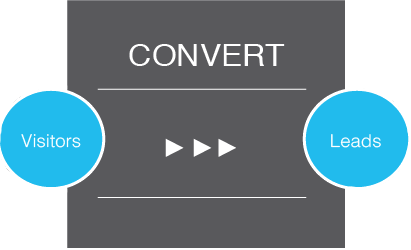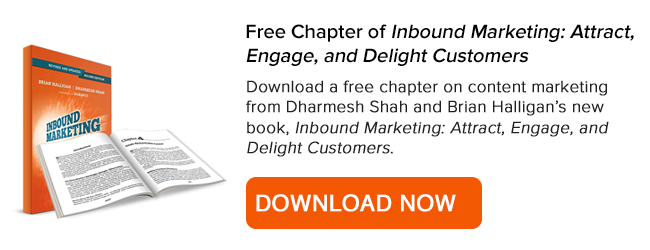 Traditional marketing methods such as TV and radio spots, magazine ads and cold calling can be defined as "outbound marketing." You're reaching out in an attempt to buy new customers - hoping that somewhere out there you'll send the right message to attract the right customer.
Traditional marketing methods such as TV and radio spots, magazine ads and cold calling can be defined as "outbound marketing." You're reaching out in an attempt to buy new customers - hoping that somewhere out there you'll send the right message to attract the right customer.
Inbound marketing works in a completely different way. The onus is on the message you send delivering value to potential customers and thus attracting them in your direction.
How is inbound marketing defined?
Inbound marketing, as defined by Hubspot, is a marketing approach focused on attracting users to your website and converting those users into sales lead.
In contrast to the outbound method of reaching out to potential customers, you attract those customers to come to you. From there your aim is to get those users to complete a "call-to-action," which places them in the sales funnel.
The four stages of inbound marketing can be defined as attract, convert, close and delight.
90% of business buyers say when they're ready to buy, they'll find you. #inbound #marketing http://t.co/BMm6ooQ3Kw pic.twitter.com/fHMsKc7gyA
— Ed Leake (@EdLeake) March 9, 2015
How do you attract visitors to your website?
There are several tools to consider here. The first is blog content, which used cleverly can have a big impact on the traffic reaching your site and play a big role in boosting the number of sales leads you generate each month.
The second tool to consider is website optimization. Too many companies are leaving leads on the table with a site that isn't working hard enough for them. Inbound marketing techniques are designed to hone websites as a hub for generating business.
The third tool to mention is social media, which deployed in an intelligent manner can also help steer traffic towards your site.
Finally, a nod for email marketing - still the marketing technique that delivers by far the best ROI in the business. Email marketing has a role to play when it comes to inbound, but it's worth pointing out the strategy involved is far evolved from the days of just buying up lists and sending out fodder.
How do you convert the visitors that come to your website?
So you've succeeded in driving more traffic to your website. The next step is converting those visitors into qualified leads and the way that happens is by having them submit their contact details.
 This is where call-to-actions come into play. A call-to-action is where a visitor is prompted to enter their details in exchange for an appealing offer - perhaps access to a free eBook or some exclusive video content you've produced.
This is where call-to-actions come into play. A call-to-action is where a visitor is prompted to enter their details in exchange for an appealing offer - perhaps access to a free eBook or some exclusive video content you've produced.
 The visitor will fill out a form to access the offer, and that form will deliver the contact details you need for a sales lead.
The visitor will fill out a form to access the offer, and that form will deliver the contact details you need for a sales lead.
Why more and more businesses are choosing inbound marketing
The most obvious reason is that inbound marketing methodologies have been proven to work. What's more, the transparent reporting of inbound marketing data makes that success measurable and an investment easy to justify when you can see the revenue impact of your marketing spend.
A closed-loop marketing approach allows every inbound marketing technique tried to be tracked for success. That way you can see what works and what doesn't, and get better the next time.
Hüify is a dynamic inbound marketing agency with a track record of delivering huge return on investment. To find out more email josh@huify.com, or schedule an appointment using the button above.


 BACK TO ARTICLES
BACK TO ARTICLES 



